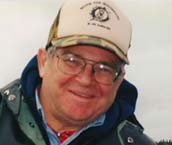Becoming A Published Author
Agony and Ecstasy of Writing a Book
By Evan and Lois Swensen
Chapter Fourteen
Books Written Backwards
How I Brought my Books to Market
Bill Hauser

Introduction
I think I wrote my books backwards. I think most authors get an idea or make a plan that they develop into a story for a book and then find a publisher. I essentially wrote two collections of short stories with no intent to write a story or book. Eventually, however, these did coalesce into books. People ask me, “How long did it take to write?” I always struggle to answer that question because most of the stories were written over a period of about 25 years. The final production required about a year each. Here is how it all happened.
In the beginning
The story of my writing career really got started in the late 1950s in a high school English writing class. Our assignment was to write a creative story. I was a lazy student and it took me a long time to come up with a plan. That resulted in a shortened time to actually execute the plan. Now, remember that this was the age of the typewriter and I could not type so I recruited my cousin to type from my handwritten material. And, being lazy, I did not carefully proofread. You can imagine what ensued. A day or two later, it was time for the critique. And it was my story that served as an example of bad writing. In part, the teacher became confused when “from the light of my match” had been typed as “from the light of my watch.” Needless to say, I immediately became humiliated and intimidated with the concept of writing.
Approximately four years later, I was in college and I had put off taking a dreaded, but required, class in English composition as long as I possibly could. Soon, of course, a writing assignment. A day or two later, it was time for the critique. I was nervous and perhaps a bit scared but soon I became astonished. The teacher liked my writing! I was pleased but I assumed it was a fluke. Most of the semester and more assignments were yet to come. My astonishment continued, I did well in the class, and my confidence as a writer grew.
And then
And then came graduate school. This eventually led to writing a Masters thesis in science. The technical writing style is quite different from creative writing. My major professor was an expert scientific writer and a terrific editor. He whipped me into shape and the skills he taught me proved valuable throughout my working life.
And then again
Three important events entered into my writing career. First, I moved to Alaska in 1980 to take a job with the Alaska Department of Fish and Game. This is important because of how it affected my thinking and my writing. Simply speaking, both books I have written are all about Alaska. Alaska experiences and Alaska fishes. I could not have written either book if I had not moved to Alaska. In addition, my job allowed me—no, required me—to travel to different parts of the state and increased my repertoire of experiences in Alaska beyond what I could do on my own or with my family.
Second, during many of these trips and other trips around Alaska, there is waiting time . . . usually because of weather or waiting for some form of transportation such as a boat or an airplane. Most people read books to pass time. Instead, I often would write a letter to share that experience with relatives and friends. These letters simply described the experiences. How I felt. What I saw. How it happened. These were like short stories about the experience and most were written during the activity. They included travels in various parts of the state, family trips, hunting trips, fishing trips, and work activities. I began to realize that many contacts looked forward to receiving the letters and expressed appreciation. On occasion, I was encouraged to publish.
Third, one year, in about the mid 1980s, I had a work assignment to do a stream habitat restoration project. I needed volunteer help and solicited the help from an organization called the Alaska Fly Fishers. They came through, turned out a lot of volunteers, and worked hard for two days to accomplish the tasks. I didn’t want to just say thanks and walk away so I contributed an article about fish habitat for their monthly newsletter. One article led to another until after several months, I was invited to commit to write a continuing monthly column and give the column a name. Fish Talk was launched and I have been writing Fish Talk ever since.
Fast forward
I retired from Alaska Department of Fish and Game in 2003 and I had a plan for post-retirement. Unfortunately (or, perhaps, fortunately) the plan did not work out quite as I had expected. For several years, I performed several small projects and occasionally wondered about book writing. But one day, while I was home minding my own business, an Alaska radio station hosted an interview and shortly, I realized they were taking about me and my book. After a phone call and a week or so later, I met the interviewee, Evan Swensen, of Publication Consultants. We discussed my ideas and plans and he explained the process, costs, and options.
First, I tackled Letters from Alaska. This entailed rereading, sorting, and selecting among the letters I had written and managed to save. Most letters were handwritten. The transcription process was tedious and the sentences needed lots of editorial attention to improve readability while maintaining fidelity to the original writing and message. But all that is boring and I had a bug to do more writing so, for each letter, which became a chapter, I added a large dose of Alaskana that was related to some detail in the chapter. I was feeling good and rolling along until an opportunity to participate in a small research project appeared. Although I enjoyed the research project, one cannot think and write in technical material and non-technical material at the same time so Letters from Alaska was put on hold. I kept in touch with Evan and I appreciated his patience.
After I was able to return to the book writing business, I went through the usual process of elation about what I had accomplished and depression about . . . who would care enough to buy a copy. Evan was a constant source of support and encouragement without directing how or what to write. Eventually he guided me through the final process of copy editing, proofreading, inserting images, and printing. Soon I was in a mode of advertising, marketing, and selling.
One more time
Before long, I was thinking more about writing and I thought more about that other favorite topic I like to talk about—fish. I made an outline and discussed the concept with some colleagues and with Evan. Some Fish Talk articles provided a skeletal framework to help get started. The process was actually quite different from the first book. I needed reference material and technical information. I understood the vocabulary and the language after the years of practice with Fish Talk so that part was easy. Some things I thought were facts, however, I needed to correct and I also needed to learn more details about some of the fish I wanted to include. But I enjoyed the learning and relearning all sorts of information about the fish. All facts needed to be checked and rechecked and I recruited colleagues and other experts I had not met for fact checking items in each chapter. The title, Fishes of the Last Frontier, went through numerous iterations before this was selected.
The marketing and selling of books is less fun than the creative process of writing and assembling of the material. Some book signings are fun and some are boring. But again, Evan helps out. He has been involved administratively in every step of the entire process and is prompt with sending royalty reports and checks. It is more fun and more interesting to have two books to sell. I am starting to meet people who have already read one or both books and usually the feedback is pleasingly positive. Perhaps the most surprising and satisfying experience in all this was when members of the Alaska Fly Fishers (who routinely read Fish Talk) simply lined up and bought these books without opening the cover. Wow! That was exhilarating and exciting. I also appreciate the satisfied smile of a buyer as I sign a book for them.
After publication, I realized that I had also created a legacy for my family and friends that documents part of my life. And I was proud to deliver my first book to my grandson for his first Christmas. And my second book two years later.
BTW
Evan is fond of reciting, “Books don’t sell books. Authors sell books.” It gets tiring but he is right on target. It is easy to write a book. And Evan is right. If you want your book to sell, you have to be committed and involved in advertising, marketing, and selling. You are the one who can best describe your book. During signings, I like to put a book on a nearby shelf. Although I may sign and sell some number of books, when I leave, the one on the shelf is still there.
So there you have it. If you have thought about writing a book, decide who is your target audience just do it to it. Writing books backward has worked fine for me.


